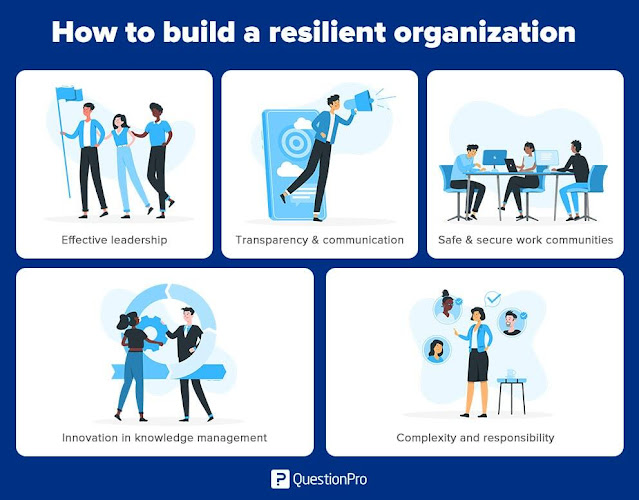Resilience and Retention Strategies
Employee retention and organizational resilience are two critical factors that are closely linked. Organizational resilience refers to a company's ability to adapt to changing circumstances and bounce back from challenges, while employee retention is the ability to retain top talent in the organization. These two factors are intertwined because having a resilient organization is key to retaining employees, while retaining top talent is key to building resilience.
Recent research has revealed new ways for companies to achieve both employee retention and organizational resilience. In this article, we will discuss some of these strategies and how they can benefit your organization.
- Focus on Employee Well-being: Prioritizing the well-being of your employees is critical to building a resilient organization. Research has shown that employees who feel supported and valued are more likely to stay with their employer, even during challenging times. To achieve this, companies can invest in employee wellness programs, flexible work arrangements, and other initiatives that support work-life balance and mental health.
- Create a Positive Workplace Culture: A positive workplace culture is essential for both employee retention and organizational resilience. When employees feel connected to their work and their colleagues, they are more likely to remain with their employer and contribute to the organization's success. To achieve this, companies should prioritize diversity and inclusion, employee recognition, and open communication.
- Offer Professional Development Opportunities: Employees want to feel challenged and valued in their roles. Offering professional development opportunities is a great way to retain top talent and build organizational resilience. Companies can provide training and development programs, mentorship opportunities, and other initiatives that help employees grow and advance in their careers.
- Embrace Technology: Technology can be a powerful tool for building organizational resilience and retaining top talent. Companies can leverage technology to streamline workflows, improve collaboration, and enhance the employee experience. For example, digital tools can be used to facilitate remote work and support employees' work-life balance.
- Prioritize Succession Planning: Succession planning is essential for building organizational resilience and ensuring business continuity. By identifying and developing future leaders within the organization, companies can ensure that they have a strong leadership pipeline and are prepared for unexpected changes or challenges.
Build Resilience Organization
Building a resilient organization is essential for long-term success and involves creating a culture and processes that can adapt to change and withstand challenges. Here are some strategies that companies can use to build organizational resilience:
- Foster a Culture of Resilience: A resilient culture is one that encourages creativity, innovation, and risk-taking. Leaders can cultivate this culture by encouraging employees to share their ideas and take calculated risks. They can also create a sense of purpose and shared vision that inspires employees to work together toward common goals.
- Develop Strong Leaders: Strong leaders are key to building a resilient organization. Leaders should be adaptable, agile, and able to inspire and motivate their teams. They should also be able to make quick decisions and respond to changing circumstances.
- Build a Diverse and Skilled Workforce: A diverse and skilled workforce can help a company navigate challenges and adapt to change. Companies can achieve this by recruiting talent with a wide range of experiences, backgrounds, and skill sets. They can also invest in employee development programs that help employees acquire new skills and stay up-to-date with the latest trends and technologies.
- Create a Robust Business Continuity Plan: A business continuity plan is a set of procedures and policies that help a company continue its operations in the event of a disruption. These plans should cover a range of scenarios, including natural disasters, cyber attacks, and other unforeseen events. Leaders should review and update these plans regularly to ensure they remain effective.
- Embrace Technology and Innovation: Technology and innovation can help a company stay ahead of the curve and respond to changing circumstances. Companies can embrace emerging technologies, such as artificial intelligence, cloud computing, and the Internet of Things, to improve efficiency, increase agility, and enhance the customer experience.
- Foster Strong Relationships with Suppliers and Partners: Strong relationships with suppliers and partners can help a company access the resources and expertise it needs to weather a crisis. Companies should invest in building and maintaining these relationships, including having a strong communication and feedback system.
In summary, building a resilient organization involves fostering a culture of resilience, developing strong leaders, building a diverse and skilled workforce, creating a robust business continuity plan, embracing technology and innovation, and fostering strong relationships with suppliers and partners. By following these strategies, companies can build a strong foundation that can help them navigate challenges and adapt to change, leading to long-term success.

